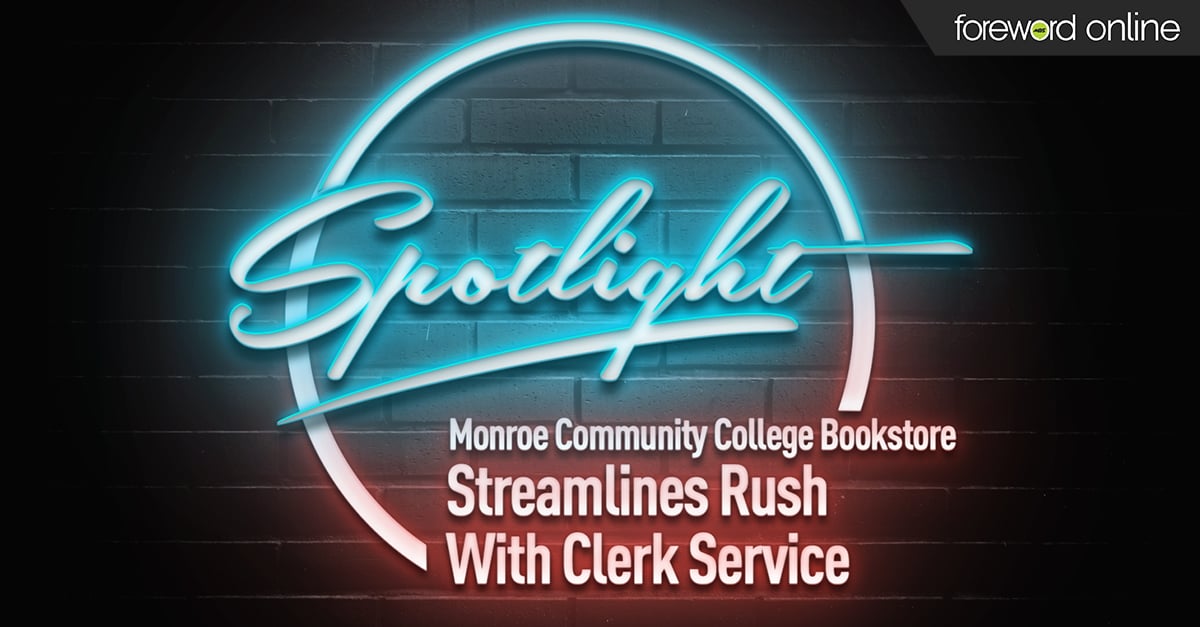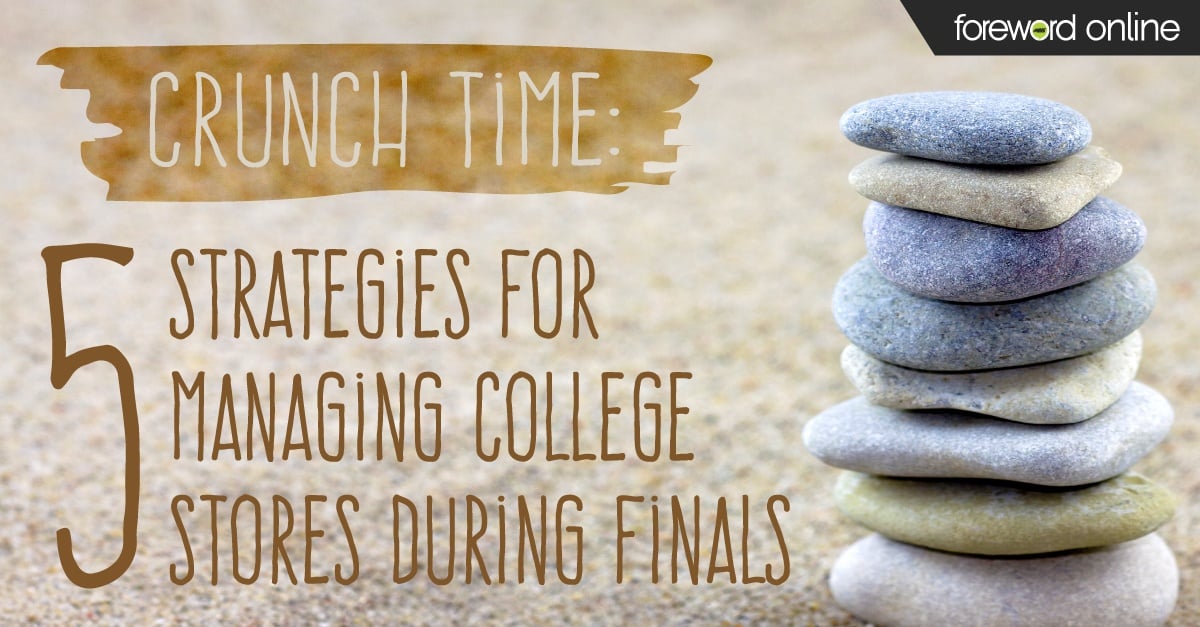The Monroe Community College Bookstore in New York identified an opportunity to streamline students’ rush experience. In the 2018 fall term, they made two major changes to how they handled textbooks in their store: they reorganized their shelves by author and they switched to clerk service. Recently, we sat down with Book Store Manager Charli Suter and Textbook Manager Darren Kwiatkowski to discuss what led to this change and how it has helped improve the student customer experience.
 What prompted your store to switch to clerk service in 2018?
What prompted your store to switch to clerk service in 2018?
Suter — We were already spending a lot of time helping students find the books for their courses. It’s very daunting to come into our store and go back to the stacks to try to figure out what you want on your own. Students would come in and get frustrated because they needed help. We have a lot of student workers, but our customers didn’t always recognize them as bookstore staff.
The rows of shelves were so crowded, it was hard to find anything you needed. It was a chaotic experience, and we needed more control over the situation. With clerk service, we could control that chaos and provide better customer service to the students. And of course, it also helped with loss prevention. That was another reason.
Kwiatkowski — One of the big pieces from my perspective was improving the customer experience. I would see customers come in, go to our shelves and then turn right back around to look for help. At times, our service desk lines were probably longer than our checkout lines during rush because students couldn’t figure out how to read the shelf tag, couldn’t figure out where their books were or couldn’t figure out how to read their schedule.
This way, we kind of nipped that in the bud. Now, all transactions and interactions are at the counter, and we can discuss their books with them. It was happening anyway. We are just streamlining it. And, in turn, we have reduced customer returns.
How is the service set up for students?
Suter — We have four computer stations set up outside of our store. Using the MBS website, we programmed it so students can swipe their ID or input their ID number, and their schedule will automatically populate. From there, they can print their booklist.
After that, they come into the store where we have three counters set up. We have 8-12 temporary employees behind the counters pulling books. The students hand one of the employees their list, and the workers ask if they want used, new or rental before they pull the books. Students can ask any questions they have. Once the student has their books, they go around the next corner and pay. It’s all pretty simple.
What are some of the benefits of clerk service?
Kwiatkowski — We have a tighter grip on our inventory, better organization and we were able to reduce shelving space. When we switched to clerk service, we also switched to alphabetizing by author. It cuts back on confusion and saves shelf space. For example, we carry a large English offering and there is one particular title that is used for several classes. Before, we had it spread out in so many different locations that if one was out of stock, people wouldn’t know to look in other spots. Now, our stock is in one place.
Suter — Doing it like this, we can also have anyone pull, shelve or reshelve books now. That helps a lot.
How have students responded?
Suter — It was hard at first, but once we started explaining it and the students went through the first semester, they were okay with it. It took a lot of pressure off of them. That’s what I have really been hearing lately, especially from students that come in from other colleges. They are like, “wow, this is so easy. I don’t have to think about it or worry. I know I’m getting the right books.”
Our students were upset when we first switched, especially the students who have been here longer. They were like, “why can’t I just go back there. I know what I need.” We had to stick to our new system and let them know this was how it was going to be.
Once they got through the line and saw the process, they were okay with it.
Kwiatkowski — It’s been mostly positive since.
Did your store have to hire more staff?
Kwiatkowski — Yes. For those weeks of peak times, we bring in temporary help or student help. Once we get through it, we go back to normal.
Suter — My labor costs go up for about six weeks through the financial aid period, and then we are back to normal.
What advice would you give another store that wants to switch to clerk service?
Suter — Do it. It is just a matter of getting in there, making that plan and saying, “okay, this is what we are going to do.” Make sure you have all the steps in place. Not all of our staff were on board with it to begin with. They didn’t think it was going to work. But, they were open to change and wanted to provide better student customer service.
Kwiatkowski — I think it is a good way to control the interaction with the customer. You’re taking the time to have those interactions and communicate with students. Especially with incoming freshmen, it is important to explain their course materials. It’s a really positive interaction that increases your chances of having those customers return. They know they can come here to get answers. We are that resource for them.




